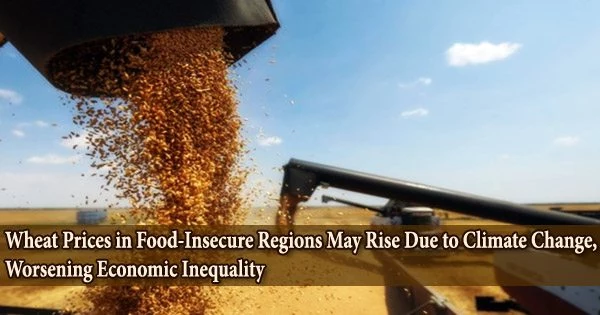20% of the calories and 20% of the protein consumed by the world’s 3.4 billion people come from wheat, which is a major source of sustenance for people everywhere. Climate change is anticipated to drastically influence the yield and price of wheat in the upcoming years, even if we achieve our climate mitigation goals and limit global warming to 2°C.
According to research published on August 19 in the journal One Earth, wheat production is projected to rise at high latitudes and fall at low latitudes. This means that grain prices are likely to fluctuate unevenly and rise in a large portion of the Global South, increasing already existing inequities.
“Most studies primarily focus on how modelling climate change impacts on wheat yields,” says lead author Tianyi Zhang, an agro-meteorologist with the Institute of Atmospheric Physics at the Chinese Academy of Science.
“This is indeed important, but crop yields do not provide a holistic vision of food security. In the real world, many countries, especially developing countries, heavily rely on agribusiness.”
A novel technique to climate-wheat-economic ensemble modeling has been devised by the team. The researchers are now able to directly examine the effects of both average climate conditions and exceptional occurrences on wheat yields, price, and the worldwide supply-demand network.
“We know from previous research that extreme events do not necessarily respond in the same way as the mean conditions, and because these extreme events are the most impactful on societies, this is an important step forward,” says co-author Karin van der Wiel, a climate scientist in the Royal Netherlands Meteorological Institute.
Trade liberalization policy under 2° warming could stabilize or even increase farmers’ income in wheat-exporting countries but would reduce income for farmers in wheat importing countries. This may create new economic inequality between farmers in wheat -exporting and -importing countries.
Tianyi Zhang
According to the model, yield will rise in high-latitude nations including the US, Russia, and most of northern Europe. However, it is expected that some regions of nations like Egypt, India, and Venezuela will see a decline in wheat yields of over 15%.
“With this change in yields, the traditional trade position of the wheat market could be deepened, and this may cause the wheat-importing regions located in low latitudes, such as Southern Asia and Northern Africa, to see more frequent and steeper wheat price spikes than wheat exporting countries,” says Zhang.
Not only may these adjustments increase the cost of a crucial food crop in nations already struggling with food security, but they could also make the price of wheat more volatile and exacerbate already existing inequities.
“Trade liberalization policy under 2° warming could stabilize or even increase farmers’ income in wheat-exporting countries but would reduce income for farmers in wheat importing countries,” says Zhang. “This may create new economic inequality between farmers in wheat -exporting and -importing countries.”
Zhang and his team are hoping that by making predictions regarding the volatility and price of wheat, the world would take notice.
“Helping improve the grain food self-supplies in developing countries is crucial for global food security,” says Zhang. “This is worthy of discussion between countries in future international agricultural collaboration policy.”





